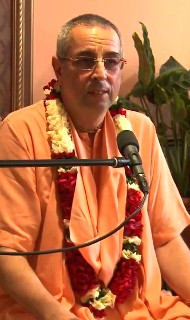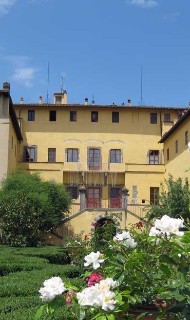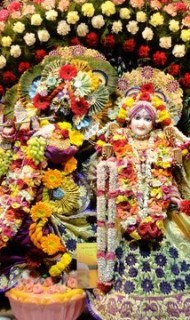Answer Podcast
Download by “right-click and save content”
The post When the mind beats us for doing wrong, how is that different from repentance? appeared first on The Spiritual Scientist.
Websites from the ISKCON Universe
Answer Podcast
Download by “right-click and save content”
The post When the mind beats us for doing wrong, how is that different from repentance? appeared first on The Spiritual Scientist.
Answer Podcast
Download by “right-click and save content”
The post When the mind simply does sankalpa and vikalpa, what does the mind understanding something mean? appeared first on The Spiritual Scientist.
Podcast
Download by “right-click and save content”
The post Bhagavatam canto 6 study 1 – 6.1.1-27 Nothing purifies as thoroughly as bhakti appeared first on The Spiritual Scientist.
Gita verse-by-verse podcast
Download by “right-click and save content”
The post Gita 10.33 – Re-envision attraction to language and words to become attracted to Krishna appeared first on The Spiritual Scientist.
The post Daily Darshan: July 28th, 2016 appeared first on Mayapur.com.
This question arose when studying chapter three of Bhagavad Gītā in our online course, in reference to text 41.
Question: Why is it easiest or most efficient to correct selfishness through disciplining the senses FIRST, as opposed to the intellect or emotions? Intuitively, that seems backwards to me since everything flows from the mind.
My Reply: I agree it is backwards in a sense. And also seems to be directly at odds with something Krishna brought up at the beginning of the chapter.
At the beginning of the chapter (3.7) says, yas tv indriyāṇi manasā niyamyārabhate ’rjuna (“To control the senses you must begin by controlling the mind.”) At the end of the chapter (3.41) however, he says, tasmāt tvam indriyāṇy ādau niyamya bharatarṣabha (“[To reclaim control of your heart and mind] begin by controlling the senses”)
However, this contradiction arises only from an incomplete reading of 3.7. The complete text says yas tv indriyāṇi manasā niyamyārabhate ’rjuna (“To control the senses you must begin by controlling the mind.”), and the second half of the text says, karmendriyaiḥ karma-yogam asaktaḥ sa viśiṣyate (“The best way to control the mind, however, is to use the active senses for responsible, un-selfish work.”)
So, the first half of the 7th text admits that, as you noted, volition flows from the mind into the actions of the body, and therefore a self-disciplined mind will automatically result in self-disiplined body, senses, and actions. However, the means to transform the mind from undisciplined to self-disciplined is to regulate its freedom to flow into the body. The mind’s freedom to flow its desires into our actions meets resistance by our effort to discipline our actions, and this resistance (as in any exercise) is what causes things to change in us.
If done improperly, the desires of the mind become pent-up and soon burst through the attempts at restriction. This happens when the restriction is too strict, sudden and unrealistic. It’s like a person who suddenly takes to working out after being completely lazy, follows a very strict program, and gets a heart attack or at least wrecks all their muscles.
The proper way to do it is to let enough selfish energy through, releasing some of the “steam” in the mind, while also holding some back. This regulated resistance strengthens the “discipline muscles.” We gradually increase the force of the regulation.
The person Krishna described at the beginning of Chapter Three – the mithyācarī “pretender” – is a person who leaps into sudden and unrealistically strict disciplines. The mental energy of selfishness has not subsided or been subdued, and it simply builds up in frustration behind the ostentatious attempts to damn it up. Krishna denounces this type of “renunciation” as a fraud.
The person Krishna advises Arjun to become, at the end of Chapter Three – the karma-yogī – gradually drains the selfish energy from the desires of the mind by gradually advancing their discipline and restriction, replacing selfish deeds more and more thoroughly with self-less equivalents that serve others far more primarily than they serve oneself.
Why not just go directly to work on the mind’s desires? Because it is simply too mysterious, subtle and slippery for a common person like you or I to face in a one-on-one battle. We would never be able to win and bring that foe under our control. Therefore Krishna’s plan of attack at the end of Chapter Three is to start with easier targets, and from there advance into the enemy’s deeper strongholds. Our actions are the most tangible, practical, and visible parts of our personality, so this is the easiest target of attack for we who want to gain mastery of the more mysterious, deep aspects of our self.
Vraja Kishor das
07.26.16, Kishori Youth Ministry performance in Carpinteria from Derek Carter on Vimeo.
____________
Giriraj Swami spoke to the touring devotees about his first meeting with Srila Prabhupada and his early days in the Hare Krishna movement.
Download (Right click ‘Save As’)
Meeting With the Kishori Youth Ministry

The Final Cut (7 min video)
Indradyumna Swami: Krsna’s Village of Peace at the Woodstock festival in Poland was everything a devotee of the Lord would want it to be: huge kirtans, massive prasadam distribution, Ratha Yatra, numerous tents depicting Vedic culture and more. But the main ingredient was the enthusiasm of the tens of thousands of guests who participated in those activities. Seeing their happy faces was more than any devotee could ask for. All glories to Sri Krsna samkirtan!
Watch it here: https://goo.gl/9ZiqRu
The post Conversation with Adi-guru about levels of perfection appeared first on SivaramaSwami.com.
So why doesn’t He set a good example for everyone?
The post Visakha, asks: In the Bhagavad Gita Krsna says He comes to reestablish religious principles but then He dances with other people’s wives (the gopis) appeared first on SivaramaSwami.com.

3 Meditations.
Ananda Vrindavana Devi Dasi: Before I pick up my beads to do my chanting meditation, I have 3 points of focus – I’m not this body, God is a person, and I have a relationship with Him.
I’m not this body is one of my favorite meditations. I like to sit quietly and hold my body still. I am the observer. I am conscious of my hands, my breath, my thoughts. I remember – yesterday, years ago, minutes ago. I think ahead – tomorrow, old age, the next hour. When I remember I am not this body I feel relief, more complete, and a real sense of freedom.
My second meditation, another favorite, is that God is a person. Although I heard this from a very young age in Catholicism, it wasn’t until I studied the path of Bhakti yoga that it made more sense to me. Krishna, the Sanskrit name for God, makes the idea of a personal God very attractive. The source of all life has to be credibly incredible. When I meditate on the premise that God is a person, I sense His presence, I sense protection, grounding, connection and belonging.
My third meditation is another, another favorite. Here my meditation is that I have a relationship with Krishna. When I hold still, slow down, or rise early I reflect on this. What does this relationship look like? Is it one of fear or love or both? How do I present myself? What do I ask for, or not? What does Krishna ask of me? What does the best, most complete form of this relationship look like?
When I pick up my beads and begin to chant the mantra, I am facing into that relationship. My 3 meditations have brought me here. Now I connect. Throughout the chanting I find myself returning to them in different ways. I chant with a longing to return to the spiritual world, a desire to engage in service, and a wish to develop affection and love for Krishna.
I also ask not to blow it – that I don’t lean too much on spiritual rules that my emotions are tied, or fall too much on the human side that I don’t touch transcendence. I pray for balance – that my humanity can nurture my spirit and that my spirit reminds me to be a better person, and a better human.
 By Niranjana Swami
By Niranjana Swami In the "Prabhupada Lilamrita" there is a wonderful description of the first harinama the devotees went on without Prabhupada. The devotees were just so ecstatic because they were so eager to go back and tell Prabhupada what they did. They couldn't wait. They burst into his room, "Prabhupada. We went out and we chanted today!" And Prabhupada was so pleased. Oh yes. Now you are understanding. Now you understand what pleases me. This makes me very happy. You have understood my message. Thank you so much. This is how to serve the devotees. Even if we don't have taste. We do it for our own purification because by serving them, we develop some taste. We benefit and anyone who comes in contact with us benefits. We don't water down. We give the essence because it is the essence which purifies the heart, puts us on the path of pure devotional service and keeps us on the path. It keeps us awake, so that we won't fall back asleep again and forget what the purpose is of this life. Continue reading "“How can I attain any good fortune in this life?”
→ Dandavats"
The post Daily Darshan: July 27th, 2016 appeared first on Mayapur.com.

France: You Are Invited To The 5 Day Padayatra In The Area Around New Mayapur.
At the occasion of ISKCON’s 5Oth anniversary, the residents of New Mayapur are organizing 5 short padayatra walks for peace in the center of France. Each day the group of walkers will drive near 4 large cities (Loches, Amboise, Châteauroux and Valençay) within a maximum of 50 kms radius from the temple and the nearby village of Luçay-le-Mâle. The devotees will then do harinama through the city for up to 3 hours and will then drive back to New Mayapur. Janananda Goswami is planning to join the group every day.
On the last day, after harinama in Luçay, Jaladuta Dasa will take his two oxen to carry the deities of Gaura Nitai for the last 2 kms all the way to the New Mayapur castle. Unfortunately, due to some health regulations, he’s not allowed to take them far from their goshala. After a speech by Janananda Goswami and the friendly mayor of Luçay, Mr. Taillandier, there will be a slide show of Srila Prabhupada and Padayatras worldwide and a delicious prasadam.
For more details about the program and your participation, please click here: http://goo.gl/APsEij

Bhaktivedanta Research Centre: These photos show handwritten pages from the original Svalikhita Jivani, Srila Bhaktivinode Thakura’s autobiography. It is among the most treasured texts in the Birnagar Collection, entrusted to BRC by the caretakers of Srila Bhaktivinode Thakura’s birthplace. It gives a detailed account that spanned most of his life from his birth in 1838 until retirement in 1894. BRC Publications Department has translated it into English. It is currently being edited and prepared for publication.
Find them in better resolution here: https://goo.gl/N1pFaE
 By Ram das
By Ram das One of the basic principles of Krsna consciousness is that one may utilize whatever talent he has in the service of the Supreme Lord. And it is a symptom of a bona fide spiritual master that he is expert in engaging everyone in practical transcendental devotional service. His Divine Grace A.C. Bhaktivedanta Swami Prabhupada has thus engaged a number of very talented artists in the service of the Lord by asking them to use their natural artistic inclination in painting pictures of the Supreme Godhead. According to all the revealed Vedic scriptures, God is not formless or void, but on the contrary He has the most attractive personal form. In fact He has many transcendental forms. Krsna appears and expands Himself in multi expansions and incarnations, and these are described in Vedic literatures such as Bhagavad-gita and Srimad-Bhagavatam. His Divine Grace A.C. Bhaktivedanta Swami Prabhupada has written many books and continues to translate authoritative books about Krsna for the benefit of all mankind, and he has requested that this transcendental literature be profusely decorated with illustrations. His Divine Grace has also founded many temples of the International Society for Krishna Consciousness, and these are transcendental centers where men and women may come and engage in spiritual life by seeing the form of the Lord. Therefore paintings are needed in all the temples, as well as for illustrations in books. For these two reasons an art department has been set up in ISKCON for production of Krsna-katha art (art based on the pastimes of Krsna). Continue reading "Transcendental Art
→ Dandavats"

The Mayor of London, Sadiq Khan congratulated ISKCON on turning 50 after ISKCON London’s Temple President, Jai Nitai dasa and Temple Secretary Bhava Bhakti devi dasi presented him with a box of cupcakes and copies of the 50th magazine on 13th July. The Mayor even tweeted this kind gesture to his followers on social media. The meeting was part of the special outreach initiative to express gratitude to the city of London in which 5000 cupcakes were distributed in key locations in London during morning rush hour to say, “Thank You London!”.

Lord Caitanya is the master of good timing!
I was distributing books in devotional garb during the recent ecstatic Ratha-yatra inAuckland, part of ISKCON’s 50th-anniversary celebration. As the procession moved along Queen Street, the city’s busiest shopping thoroughfare, I stopped Peter.
Tall, young, and confident, Peter told me he was studying English and history in Sydney and was visiting Auckland for only one day. I introduced myself as a monk and handed him the Bhagavad-gita.
“Ahhhh, Bhagavad-gita … this is amazing!” Peter immediately exclaimed. He explained that although he is “a staunch atheist with absolutely no interest whatsoever in becoming a Hare Krishna,” he had regularly seen devotees in Sydney and was curious to know more about the lifestyle.
Having arrived just an hour before we’d met, he had checked in at a central backpackers hostel and gone to the lounge to relax. Bored by what was on TV, he had glanced at the bookshelf and immediately noticed a copy of the Bhagavad-gita.
(What is interesting here is that about nine months ago Bhakta Mukesh and I had distributed Prabhupada’s books to all the city-center hostels, trying to display the books in prominent places on the bookshelves.)
Peter took the book down off the shelf and appreciated its quality; he felt it was a book he would definitely like to read one day. Still, given that he was only in Auckland for the night, he replaced the book on the shelf and headed out into town.
As he left the hostel, he ran straight into Lord Jagannath’s chariot festival, took darshan of the Lord and His devotees, and heard the chanting of the Holy Names.
Minutes later we met!
So, Peter was more than happy to take the Bhagavad-gita to read on his flight back to Sydney, and I was left to marvel at the extraordinary mercy of Lord Jagannath!
I love the way Lord Caitanya makes such perfect, expertly synchronized arrangements to help conditioned souls receive His mercy.
Srila Prabhupada ki jaya!
Your servant,
Caitanya Vihara Dasa
 By Patita Pavana das
By Patita Pavana das The soulful sankirtan of Shri Vishnujana Maharaja illuminated the streets of San Francisco and Los Angeles , and then across the States, from the earliest days of Krishna consciousness. Today his uplifting bhajans and melodious kirtans still echo in the halls of ISKCON centers around the world. There was never a more faithful servant of Shrila Prabhupada, and the fortunate Vaishnavas who served under his loving care always keep his memories in their hearts. Shrila Prabhupada, who by his mystic potency sometimes appeared more as a member of ISKCON than the exalted founder-acharya, also expressed a desire to spend a week traveling with the bus party led by Vishnujana Swami. Many fell under the irresistible spell of Vishnujana Maharaja and became Prabhupada’s devotees. HH Indradyumna Swami met him on a college campus in Michigan . He accepted his invitation to the love feast, and when he first showed up at the Detroit temple, he asked for Vishnujana Swami saying, “I want to be like him.” Continue reading "The Legend of Vishnujana Maharaja
→ Dandavats"

At Carnegie Hall ( a concert venue in Midtown Manhattan in New York City) singing My Sweet Lord- Hare Krishna, with ISKCON devotees,...

New British PM first day in office. This photo is from the Asian Awards 2010 where she chose to wear saree. Theresa May often wears Indian clothes to Indian functions..
Gita verse-by-verse podcast
Download by “right-click and save content”
The post Gita 10.32 – Krishna manifests as all phases of action in material existence appeared first on The Spiritual Scientist.
(Kadamba Kanana Swami, 25 July 2016, Swiss Summer Camp, Switzerland, Srimad Bhagavatam 12.3.1-2)
Uddhava is very broadly described in our scriptures. Uddhava was a devotee of the Lord from his childhood. Advanced souls get the chance to take birth in a devotee family; the liberated soul never forgets Krsna. Vidura is actually Yamaraj who had been cursed to be born as a sudra. When Vidura met Uddhava and inquired about Krsna, Uddhava would get overwhelmed.
Uddhava mentioned that Krsna had just left Vrindavan recently and is in Mathura. He had already killed the elephant and popped-out Chanura’s eyes. Krsna had “accidentally” killed Kamsa too! He wanted to kick-off Kamsa’s crown but Kamsa died from falling. Then they forced Krsna to become the ruler of Mathura.
Nanda Maharaj asked Krsna to come home to Vrindavan. Krsna told him that the Yadus would insist that he stay and not leave again thus Krsna wanted to send a messenger to Vrindavan. Uddhava was the only suitable one to send as a messenger as they were best friends.
Uddhava and Krsna had a secret language because Uddhava spoke such a difficult language that only Krsna could understand. Uddhava spoke the Bhagavatam in 100 000 verses in the heavenly planets. In the heavenly planets, the level of Vedic knowledge exceeds ours. Bhaktivinoda Thakur explained that only 6% of Vedic culture was existing and many years have passed since he said that.
But ultimately, we don’t depend so much on all other scripture because we have the essence in the Srimad Bhagavatam therefore we are not missing out. Almost all that is inauspicious in the heart will be destroyed by reading the Bhagavatam. But why not ALL inauspiciousness? There is one complication which is that as one gets learned, one may get proud! Pride is the one thing that will not be removed by reading Bhagavatam BUT when we chant japa, pride is destroyed!
In kirtan one may still get really proud, “I’m feeling bhava or ruci!” but while chanting japa no one feels bhava. (Laughter!) We realize that we do not have taste yet as we do not chant in ecstasy. Therefore, we need the mercy of vaisnavas!
So why was Uddhava chosen as the messenger? He was well learned because he was educated by Brihaspati and Uddhava looked almost the same as Krsna, especially from a distance. When Uddhava got to Vrindavan and said to the gopis, “Krsna is everywhere, why are you lamenting?” he was able to generate some faith in the gopis because Uddhava looked so much like Krsna, and because he knew Krsna’s heart.
Uddhava was the most intimate associate of Krsna outside of Vrindavan. Rohini is in the Vrindavan and Dvaraka pastimes, and so is Balarama, therefore Krsna got them to bless Uddhava because if one wants to go to Vraja one needs the blessings of one who has access. One cannot go to Vrindavan by mundane transport. Uddhava saw Krsna in every tree on the way to Vrindavan – uddipan, how things remind us of Krsna.
Krsna is all pervading but so what, the residents of Vrindavan still want personal exchange. They do not care about philosophy; only personal association matters to them. Uddhava could not understand the mood of the residents of Vrindavan.
Back to Vidura now. Vidura saw that Uddhava as an extraordinary devotee. Krsna was supposed to meet Duryodhan to discuss and try to avoid the war. He was invited to the big palace but he stayed at Vidura’s place because he could not stay at the place of one who was envious of the Pandava’s. How exalted Uddhava and Vidura are! And how far away we are… Uddhava was praying to be a blade of grass at Kusum Sarovar. We consider Uddhava as a prototype and we follow in his footsteps.
*Notes taken by Nimai during the lecture

“Wherever you go and whoever you meet, just tell them about Krishna, and in that way, by Lord Chaitanya’s order, become a guru.”
Vaiyasaki das: On our way back driving through the Himalayas, we passed an apiary with beehives, and, knowing that Prabhupada was in Vrindavan, we thought, “Wow, wouldn’t that be great to get Prabhupada some real Himalayan honey?”
 By Tattvavit Dasa
By Tattvavit Dasa Villa Vrindavan, in Italy, almost looks too old to have a future, but the humble devotees there are confident it will. ISKCON’s oldest building probably, the villa is four centuries old. Naturally, not everything works. A sunken semicircular fountain does not spout. The front roof nobly displays a stopped clock; the bell over it no longer chimes times. When devotees moved in with Krishna, the Supreme Personality of Godhead, putting their faith in the Lord’s names and graces they named the hundred-and-twenty-acre estate after India’s transcendent village where Krishna enacted a humanlike childhood. How and why is the project now moving ahead? Continue reading "Villa Vrindavan: Krishna’s Home in Tuscany
→ Dandavats"
 By Akrura Nandan das
By Akrura Nandan das ISKCON Chandigarh celebrated ISKCON Incorporation Week from 11th July to 17th July 2016. From 11th to 17th July we had regular glorification of Srila Prabhupada during Bhagavatam class. In addition to that during Sunday festival program on 17th July evening many senior devotees glorified Srila Prabhupada and a drama named “Swamiji at Sea” was staged. Continue reading "ISKCON Incorporation Week by ISKCON Chandigarh
→ Dandavats"
The post Congratulations!!!! appeared first on SivaramaSwami.com.

TO VOTE OR NOT TO VOTE?
Interviewer: Do you think most of the Hare Krishna members will participate in the election in November? Do you think they will register and vote?
Prabhupada: Personally I never give votes.
Interviewer: Will they follow your example and not vote?
Prabhupada: I do not know, but our principle is that I vote for this man or that man if there is some spiritual benefit. That is our point. (Interview with the religion editor of the Associated Press in New York, 16 July 1976)
I have never given vote. Since we have got this sva-raj, Indian independence, as soon as the vote question comes up, I go away. I think, “Why shall I give this nonsense person my vote? None of them are liked by me.” So I avoid it. I don’t believe in it.
(Room Conversation in Bombay, 8 January 1977)

Marvelous Mridanga Performance by Young Players of ISKCON Mumbai (8 min video)
Mridanga (shri khol) performance on the occasion...

Annual Radha-Krishna Boat Festival and Family Picnic at Mission Bay, San Diego (Album with photos)
New Govardhana Family Picni...

Hare Krishna devotees in Auckland (New Zealand) (2 min video)
Commentator: These people are walking around the Queen Street eve...